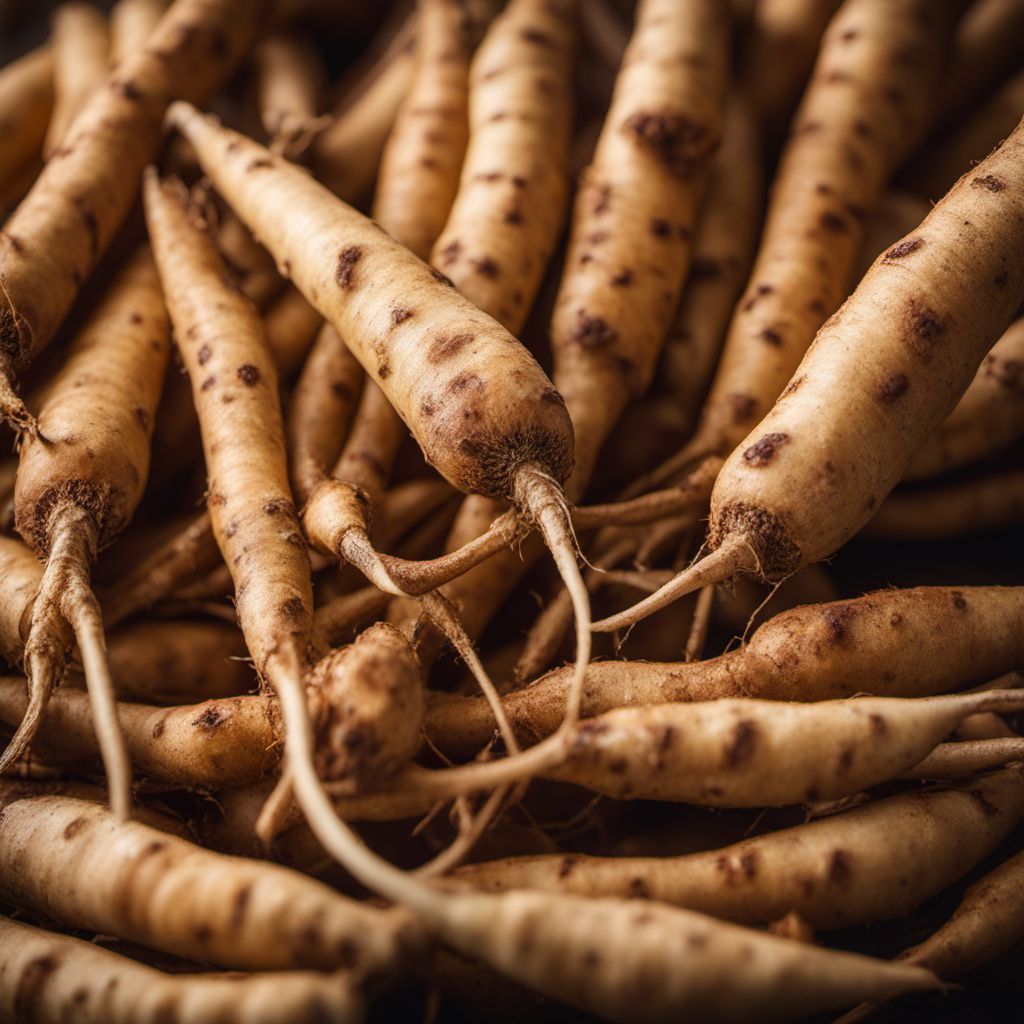
Ingredient
Cassava roots
The Versatile Tuber: Cassava Roots
Cassava roots are starchy tubers with a rough brown exterior and a creamy white flesh. They have a mild, slightly sweet taste and a firm, fibrous texture. When cooked, cassava roots become soft and tender, making them suitable for a wide range of culinary applications.
Origins and history
Cassava roots have a long history and are believed to have originated in South America. They were a vital food source for indigenous communities and played a significant role in their cultural and culinary traditions. Today, cassava is cultivated in tropical regions worldwide, including Africa, Asia, and the Caribbean.
Nutritional information
Cassava roots are a good source of carbohydrates and dietary fiber. They also contain essential minerals like calcium, phosphorus, and potassium. However, it's important to note that cassava roots should be properly processed to remove cyanide compounds, which can be toxic if consumed in large quantities.
Allergens
Cassava roots may contain traces of cyanide compounds, especially if not processed correctly. It is crucial to peel, wash, and cook cassava thoroughly to eliminate any potential toxicity.
How to select
When selecting cassava roots, look for firm, unblemished tubers with a smooth, intact skin. Avoid roots that have soft spots, mold, or signs of decay. Additionally, choose medium-sized roots, as they tend to have a better texture and flavor compared to larger ones.
Storage recommendations
To store cassava roots, keep them in a cool, dry place away from direct sunlight. They can be stored at room temperature for up to a week. If you want to extend their shelf life, you can peel, cut, and freeze them for several months.
How to produce
Cassava roots can be grown in tropical and subtropical regions. They require well-drained soil and regular watering. Planting cassava stems or cuttings is the most common method of propagation, and they can be harvested after 8-12 months of growth.
Preparation tips
Cassava roots can be boiled, steamed, fried, or mashed. They are commonly used to make cassava flour, which is a gluten-free alternative to wheat flour. Cassava roots can also be used in stews, soups, and as a side dish in various cuisines around the world.
Culinary uses
Cassava roots are widely used in traditional dishes such as cassava cake, yuca fries, and bobó de camarão (a Brazilian shrimp stew). They are also used to make tapioca pearls, a popular ingredient in bubble tea and desserts.
Availability
Cassava roots are commonly available in tropical regions, including South America, Africa, Asia, and the Caribbean.
More ingredients from this category

Tannias
Versatile Tropical Tubers

Konjac roots
The Versatile Wonder: Unveiling the Potential of Konjac Roots
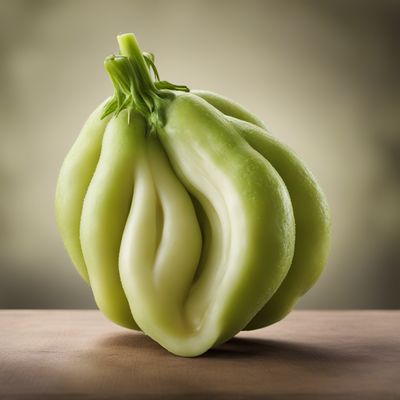
Chayote roots
The Versatile Vegetable: Chayote Roots

Canna
"The Versatile Wonder: Unveiling the Culinary Potential of Canna"

Taros
The Versatile Taro Root

Blue taros
The Vibrant Purple Powerhouse
Recipes using Cassava roots » Browse all

Puerto Rican-style Chicken Soup
Sopa de Pollo Puertorriqueña - A Hearty Puerto Rican Chicken Soup

Gabonese-style Farm Feast
Savory Delight: Gabonese-inspired Farm Feast
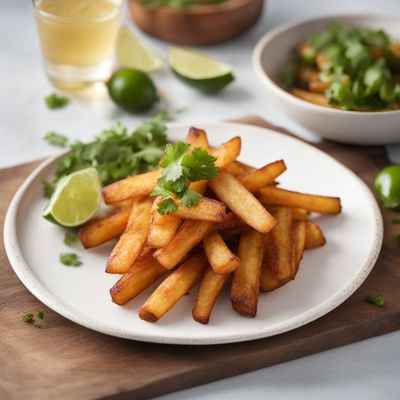
Ecuadorian-Style Yuca Fries
Crispy Yuca Delight: Ecuadorian-Style Fries with a Latin Twist

Spicy Lamb with Cassava Mash
Fiery Lamb Delight with Creamy Cassava Mash
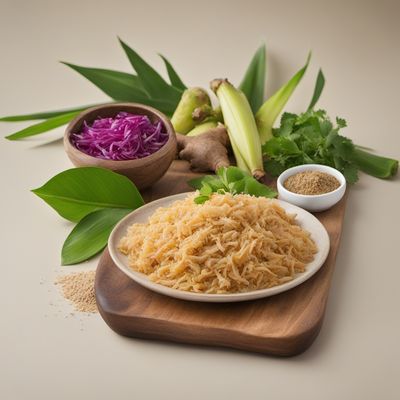
Marshallese Flaki - A Taste of the Islands
Island-Inspired Flaki: A Marshallese Twist on a Polish Classic

Refreshing Mango Patbingsu
Tropical Delight: Mango Patbingsu - A Korean Summer Sensation

Paraguayan-style Pizza alla Pala
Delicious Paraguayan Pizza on a Paddle

Hot Cross Buns Recipe
Spiced Delights: Homemade Hot Cross Buns

Cuban-inspired Bojo Cake
Tropical Delight: Cuban-inspired Bojo Cake
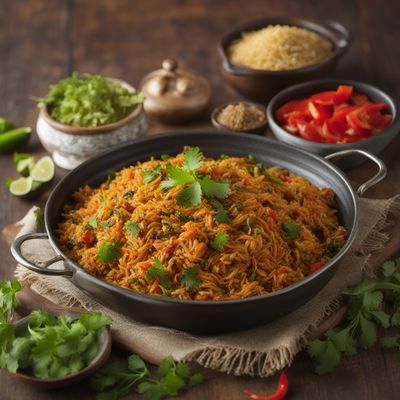
Muradabadi Biryani with a Paraguayan Twist
Paraguayan-Inspired Muradabadi Biryani: A Fusion of Flavors
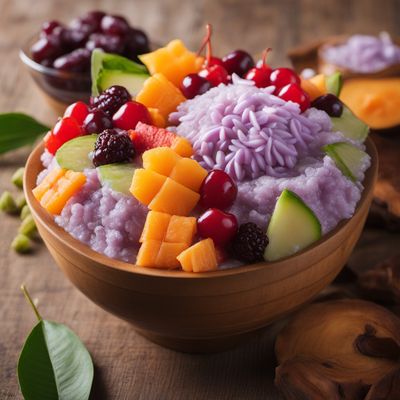
Halo-Halo Delight
Tropical Bliss: A Refreshing Twist on Halo-Halo
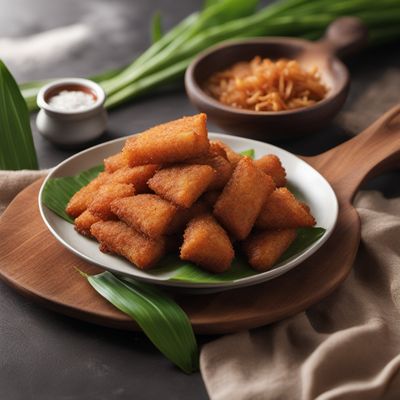
Crispy Fried Cassava
Golden Delight: Crispy Fried Cassava with a Twist